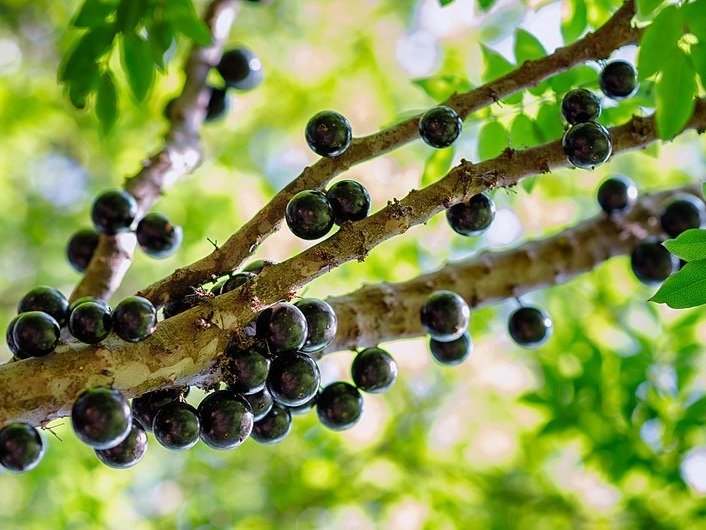The Jaboticaba tree (Plinia cauliflora) is a remarkable fruit-bearing tree native to Brazil, known for its unique and intriguing growth habit. One of the most fascinating aspects of the Jaboticaba is that its fruit grows directly on the trunk and larger branches, rather than at the ends of branches like most other fruit trees.
This unusual growth pattern is called cauliflory, a term used to describe plants that produce flowers and fruit directly from the trunk. The Jaboticaba produces small, grape-like fruits that are dark purple to black when ripe. These clusters of fruit can appear in abundance, creating a striking visual spectacle on the tree’s trunk.
The Jaboticaba fruit is not only visually appealing but also delicious. It has a sweet, aromatic flavor and a juicy texture, making it a favorite among locals. The fruit can be eaten fresh, used to make jellies, wines, and liqueurs, or incorporated into various desserts.
Growing a Jaboticaba tree can be a rewarding experience. These trees thrive in warm, humid climates and prefer well-draining soil. While they can be grown from seed, propagating them through cuttings is often more successful. Patience is key, as Jaboticaba trees can take several years to bear fruit, but once they start, they can produce heavily.
The Jaboticaba tree is not only an extraordinary plant due to its unique fruiting habit but also a delicious addition to any garden. Its ability to produce fruit directly from its trunk sets it apart from other trees and makes it a fascinating subject for horticulturists and fruit enthusiasts alike. If you have the opportunity to taste Jaboticaba fruit, it’s an experience not to be missed!